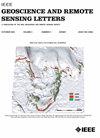基于生成对抗网络的图像数据扩展及其在极光识别中的应用
IF 4
3区 地球科学
Q2 ENGINEERING, ELECTRICAL & ELECTRONIC
引用次数: 2
摘要
近年来,自动极光图像分类得到了积极的研究。基线方法依赖于监督学习。由于这种方法需要大量标记的教师数据,因此有必要手动收集数据并对其进行标记,这是一项耗时的任务。在这项研究中,我们提出了一种通过将训练图像输入到深度卷积生成对抗性网络(DCGAN)中并以这种方式生成图像来扩展图像数据集的方法。所提出的方法意味着使用生成的图像和原始图像来训练分类器。它可以减少手动执行的标记操作的数量。作为评估实验,我们对扩展前后的数据集进行了分类器学习,并证实了由于对扩展后的数据集的训练,分类精度得到了提高。本文章由计算机程序翻译,如有差异,请以英文原文为准。
Extension of Image Data Using Generative Adversarial Networks and Application to Identification of Aurora
In recent years, automatic auroral image classification has been actively investigated. The baseline method has relied on supervised learning. As this approach requires a large amount of labeled teacher data, it is necessary to collect the data manually and label them, which is a time-consuming task. In this study, we proposed a method to extend an image data set by inputting training images into a deep convolutional generative adversarial network (DCGAN) and generating images in this manner. The proposed approach implied using both generated and original images to train the classifier. It could reduce the number of labeling operations performed manually. As an evaluation experiment, we performed classifier learning on the data sets before and after extension and confirmed that the classification accuracy was improved because of training on the data set after the extension.
求助全文
通过发布文献求助,成功后即可免费获取论文全文。
去求助
来源期刊

IEEE Geoscience and Remote Sensing Letters
工程技术-地球化学与地球物理
CiteScore
7.60
自引率
12.50%
发文量
1113
审稿时长
3.4 months
期刊介绍:
IEEE Geoscience and Remote Sensing Letters (GRSL) is a monthly publication for short papers (maximum length 5 pages) addressing new ideas and formative concepts in remote sensing as well as important new and timely results and concepts. Papers should relate to the theory, concepts and techniques of science and engineering as applied to sensing the earth, oceans, atmosphere, and space, and the processing, interpretation, and dissemination of this information. The technical content of papers must be both new and significant. Experimental data must be complete and include sufficient description of experimental apparatus, methods, and relevant experimental conditions. GRSL encourages the incorporation of "extended objects" or "multimedia" such as animations to enhance the shorter papers.
 求助内容:
求助内容: 应助结果提醒方式:
应助结果提醒方式:


